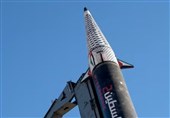New State of Matter Discovered in Scientific Breakthrough
TEHRAN (Tasnim) – Scientists discovered a new state of matter in a breakthrough promising an imminent revolution in computing performance.
The landmark discovery is hoped to both increase storage space and speed-up quantum computing. The research was focused on quantum computing, a cutting-edge method allowing for exponentially faster performance than traditional computing. In quantum computing, data is processed in qubits instead of traditional binary bits in the form of 0s and 1s, Express reported.
This allows values between 0 and 1 to be tabulated, instantaneously accelerating the speed data can be processed.
Professor Javad Shabani, of New York University, said: “Our research has succeeded in revealing experimental evidence for a new state of matter—topological superconductivity.
“This new topological state can be manipulated in ways that could both speed calculation in quantum computing and boost storage.”
Professor Shabani and his team examined a transition of quantum state from its conventional state to a new topological state, measuring the energy barrier between these states.
The physicists managed this by directly measuring signature characteristics of this transition in the order parameter governing the new topological superconductivity phase.
They focused on bizarre Majorana particles, which are their own antiparticles, substances with the same mass, but with the opposite physical charge.
Majorana particles fascinate physicists due to their potential to store quantum information in a special computation space where quantum information is protected from the environment noise.
However, there is no natural host material for these particles, also known as Majorana fermions.
Researchers consequently have sought to synthesise new forms of matter on which these calculations could be conducted.
Professor Shabani added: ”The new discovery of topological superconductivity in a two-dimensional platform paves the way for building scalable topological qubits to not only store quantum information, but also to manipulate the quantum states that are free of error.
The revolutionary discovery coincides with another finding fuelling hopes quantum computers will soon become commercially viable.
The superconductor material, uranium ditelluride (UTe2), was first developed in the 1970s, but scientists from the National Institute of Standards and Technology (NIST) have discovered previously unknown properties of it that could prove vital to the development of quantum computers.
Quantum computer developers have faced considerable challenges with maintaining quantum coherence for long enough to perform the required computations because the relationships between qubits are so delicate, making them very easy to disrupt from outside, commonplace disturbances, such as low magnetic fields.
The scientists have discovered the superconductor is not only not magnetic, but has a strong resistance to magnetic fields, which is extremely rare for the material type.
This means it could be used to design qubits that would be less likely to lose quantum coherence, reducing the errors currently commonplace in quantum computers.






